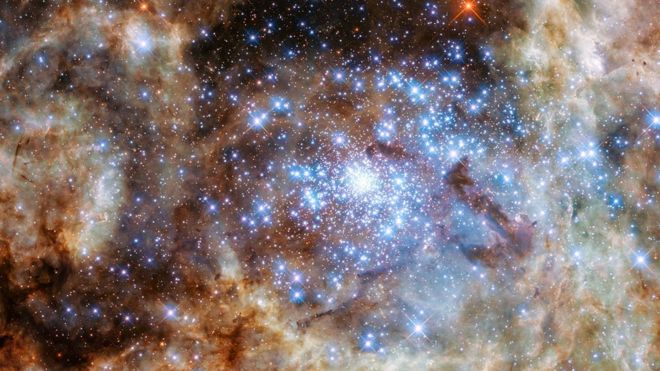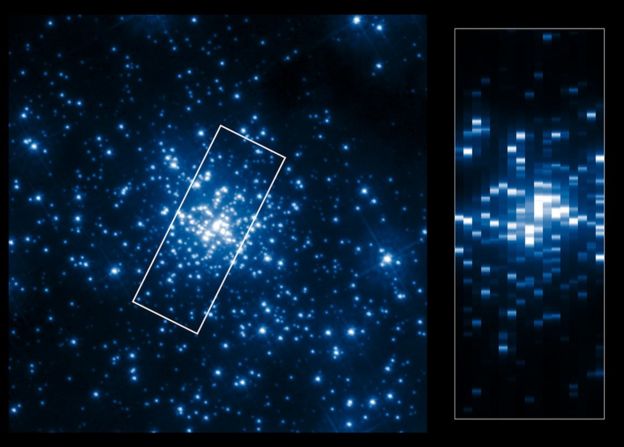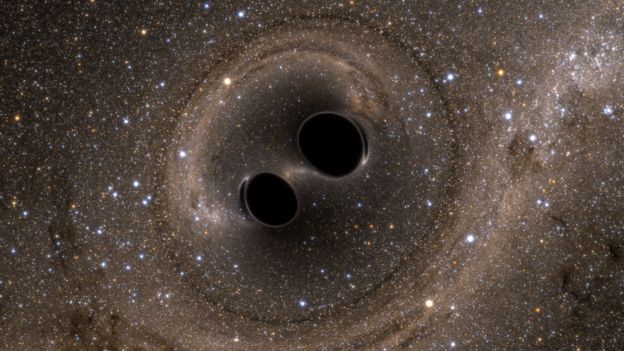
The Tarantula Nebula of the LMC has become a creative nursery for some stars so enormous, they defy imagination
Hubble has probed a clutch of monster stars about 170,000 light-years away on the edge of our Milky Way Galaxy. Some two dozen behemoths were identified, all with masses in excess, at the very least, of a hundred times that of the Sun.
Four were known previously, including the remarkable colossus catalogued as R136a1 (illustrated at the bottom of this post) which is 250 times as massive as our home star. But the new survey finds many more of the super-objects in a tight patch of sky within the Large Magellanic Cloud.In just a tiny bit of this satellite galaxy, we see perhaps two dozen stars with more than a 100 solar masses. Out of which, nine are in a close, tight core just a few light-years across. These 24 represent more of these enormous celestial bodies than there are in the entire Milky Way Galaxy.
They build on earlier work reported in 2010 that first described R136a1 - the most massive and most luminous star identified to date. That study used data gathered principally by a ground-based telescope in Chile.
This follow-up research employed the pin-sharp resolution and ultraviolet sensitivity of the orbiting Hubble telescope to tease out yet more detail.
In 2010, astronomers saw four monster stars including R136a1 in the central core. Thanks to Hubble, they have detected and recorded more.

Left: The tight core of big stars is seen in UV light. Right: A spectrograph is used to determine star properties
The stars are not only extremely massive, but they are also extremely bright. Together, these nine stars outshine our Sun by a factor of 30 million, according to Prof Crowther, a leader of the study.
"Because they are so massive, they are all close to their so-called Eddington limit, which is the maximum luminosity a star can have before it rips itself apart; and so they've got really powerful outflows. They are shedding mass at a fair rate of knots," the astronomer added - up to an Earth mass of gaseous material per month.
The question is why this tight corner of space, located in the Tarantula Nebula of the LMC, harbours so many giants.
Prof Crowther thinks it is because the gas and dust in the region has become extremely compressed as the Large Magellanic Cloud has skirted the edge of the Milky Way. One thing is for sure - none of these monster stars will be around for more than a few million years. To burn so bright is to burn briefly.
"A lot of these stars will be in binaries (in pairs), and when they die they'll produce black holes, which will merge at some point in the dim and distant future. And when they do they'll produce gravitational waves.
"The first detection of gravitational waves [reported by Advanced LIGO last month] was from the merger of a pair of 30-solar-mass black holes. They probably came from 100-solar-mass stars." Prepare for more wondrous revelations in the near future.

Some of these monsters will one day turn into black holes that merge in a burst of gravitational waves

No comments:
Post a Comment
Through this ever open gate
None come too early
None too late
Thanks for dropping in ... the PICs